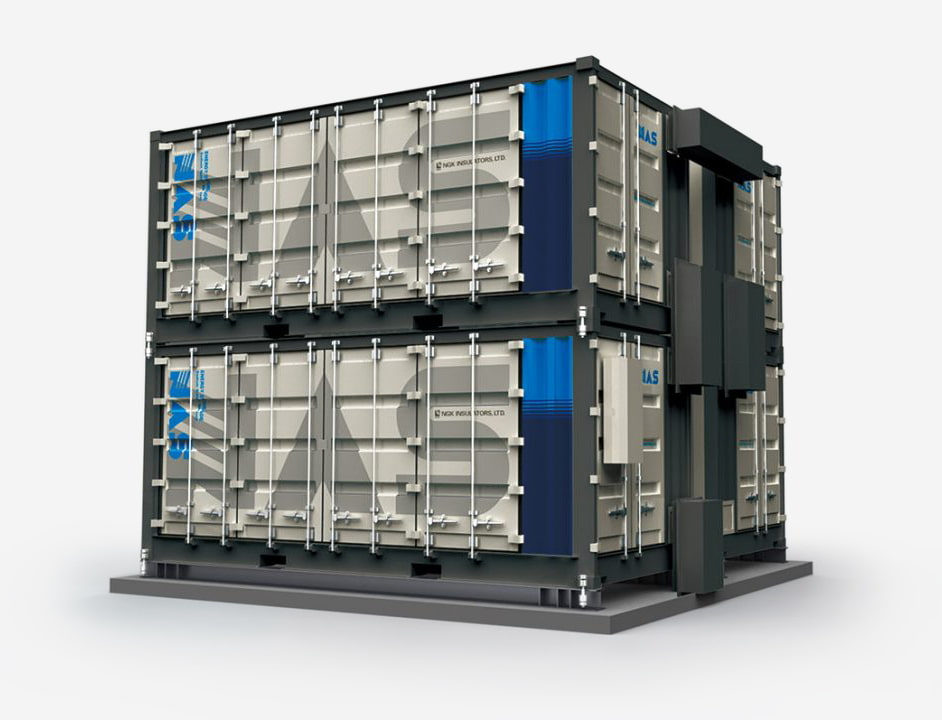Contributing to a carbon-neutral
social infrastructure
Home | Business Fields | Energy Storage Systems
A product of NGK’s proprietary advanced ceramic technologies, the NAS battery, was the world’s first commercialized battery system capable of megawatt-level electric power storage. The NAS battery system boasts an array of superior features, including large capacity, high energy density, and long service life, thus enabling a high output of electric power for long periods of time.
We as NGK group have a long history of expertise in the field of NAS batteries since we started development in 1984 and are one of the global leaders in this technology. Our customers can profit from this and our full service offers to tackle the further build-up of renewable energies and many other applications.
The NAS battery is a megawatt-level energy storage system that utilises sodium and sulphur and features NGK’s proprietary advanced ceramic technologies. The principal of which is a beta-alumina solid electrolyte separating the two liquid electrodes and acting as a superionic conductor.
The NAS battery system boasts an array of superior features including:
Thus, enabling a high output of electric power for long periods of time.

NAS battery system can charge at night when power demand is low and provide power in the daytime to reduce peak power. Moreover, the NAS battery system can be used as an emergency power supply in power outages and during momentary drops in voltage. NAS batteries are increasingly being utilized in stabilising output from wind and solar power generators whilst supporting the spread of renewable energies and establishment of the smart grid.
These batteries can be incorporated in microgrids which are small-scale localized power supply networks that feature reduced energy costs and environmental impact. Particularly for demand response programs that make effective use of stored electric power but also with other new energy solutions spreading throughout the world. All of which help contribute further to NGK’s efforts to reduce climate change and help build sustainable societies.
NAS batteries have been designed with safety as a top priority and has been improved and assured by field experience and safety tests.
Each cell is wound with insulation sheet and heat and corrosion resistive sheet.
The safety is guaranteed by the following features:
NAS batteries also comply with CE Marking requirements which are essential for exportation to Europe.
The scalability of NAS installation is in the range of many 10’s or 100’s of MW for durations of 6 to 7 hours is of such a scale that it can defer or eliminate some transmission, distribution, and generation investments. Especially when it is used in association with variable renewables for a clean solution. Furthermore, the construction leadtime is significantly shorter than upgrading or building transmission/distribution lines or substations.
A NAS battery system consists of battery enclosures, battery modules and a PCS (AC/DC power conversion system) as the main components. NGK’s scope is the battery enclosures and battery modules. Then NGK works with several power conversions system (PCS) manufacturers to complete the battery system.
NAS battery systems, a key solution to realizing stable supply of renewable energy, have already been deployed at more than 200 sites worldwide, where they handle approximately 580 MW/4000 MWh of electricity (as of January 2020).